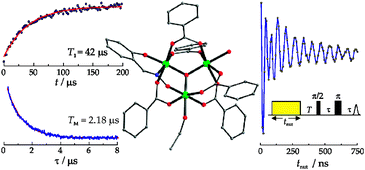Electron spin–lattice and spin–spin relaxation study of a trinuclear iron(iii) complex and its relevance in quantum computing
Abstract
Electron spins of molecular magnets are promising candidates for large scale quantum information processing because they exhibit a large number of low-lying excited states. In this paper X-band


 Please wait while we load your content...
Please wait while we load your content...